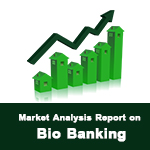
Aijun Wan
University of California, USA
Title: Engineering stem cells and biomaterials to treat birth defects before birth
Biography
Biography: Aijun Wan
Abstract
Statement of the Problem: Birth defects are common, affecting approximately 3% of all live births in the United States. Congenital defects can result in significant morbidity and are the most common cause of infant mortality, accounting for a minimum of 20% of all infant deaths worldwide. Improvements in prenatal screening and diagnostics- including ultrasonography, chorionic villus sampling, amniocentesis, fetal magnetic resonance imaging, and, most recently, circulating fetal DNA in maternal blood have allowed earlier diagnosis of a range of congenital disorders. With prenatal diagnosis came the pursuit of prenatal interventions to prevent or address pathology that developed in utero.
Methodology & Theoretical Orientation: Our lab has been developing fetal tissue engineering approaches using different types of stem cells and biomaterials to treat a variety of birth defects before birth. One example is in utero transplantation of stem cells with extracellular matrix-based scaffolds to treat spina bifida. Our recent data have shown that treatment with early
gestation placenta-derived mesenchymal stromal cells (PMSCs) during in utero repair cures spina bifida-associated motor function at birth in a fetal lamb model. Based on the previous studies, we are refining the treatments and pursuing IND enabling studies for future clinical translations. We are also developing in utero stem cell transplantation approaches to treat other birth defects such as hemophilia, tracheal occlusion and congenital diaphragmatic hernia.
Conclusion & Significance: Stem cell therapies have the potential for use in fetal Tissue Engineering applications, as a vehicle for fetal Genetic Engineering, for the induction of fetal tolerance for postnatal transplantation, and perhaps even for use in fetal treatment of potential adult disease. The fetal environment is ideal for the introduction of cell-based therapies prior to
development of pathology. As with any new therapeutic modality, the ideal technique, potential risks, and long-term efficacy need to be determined.

